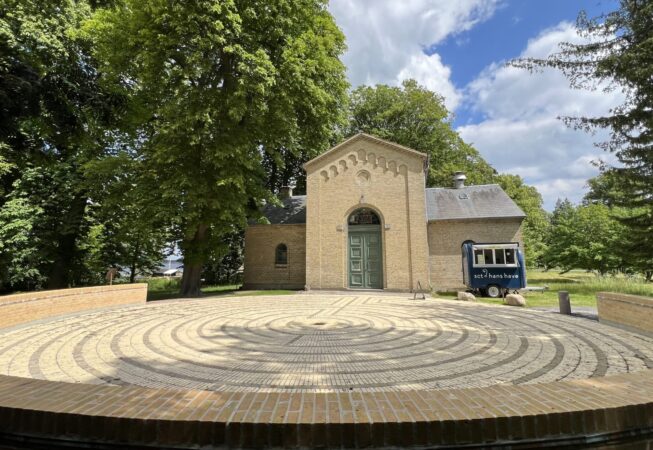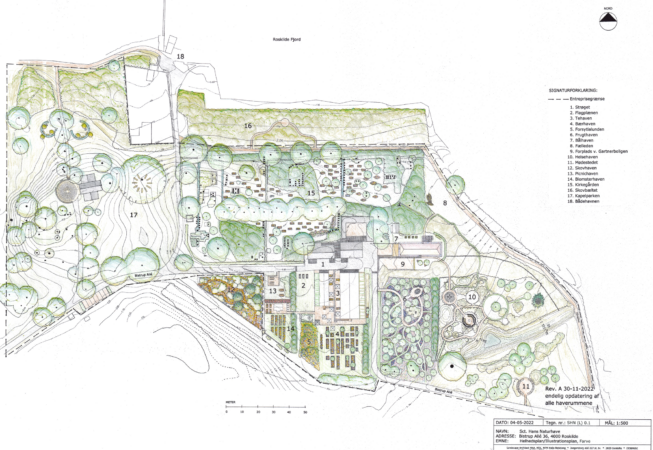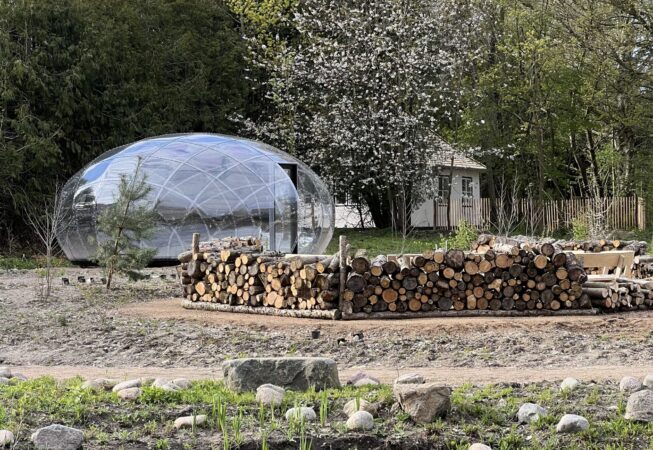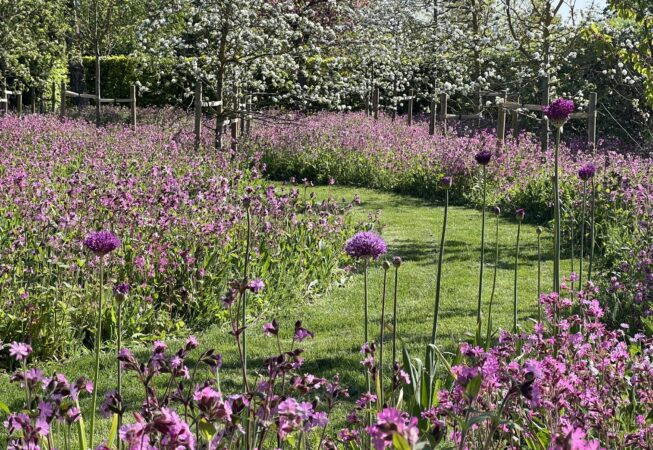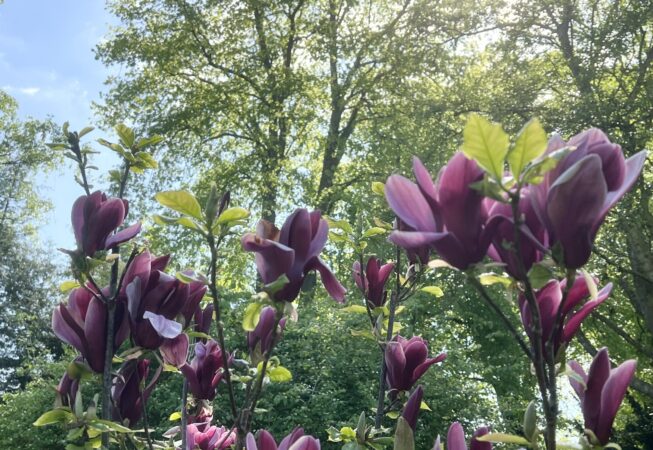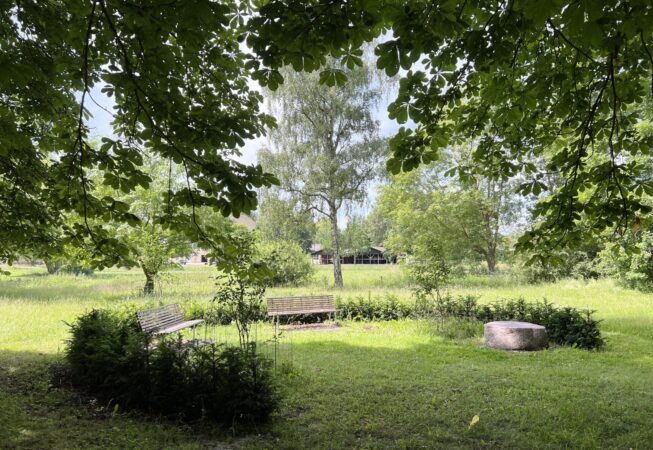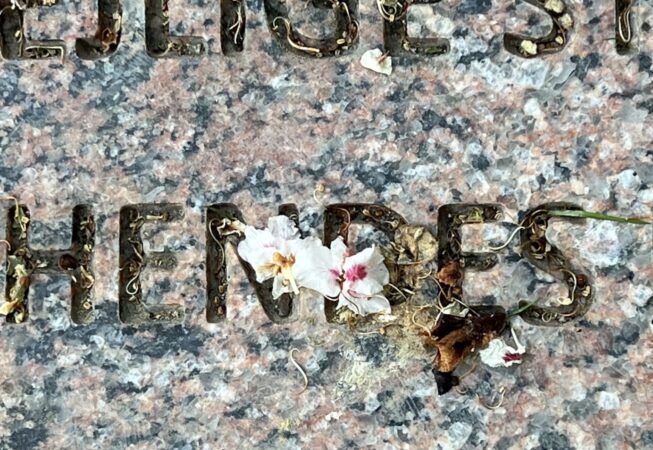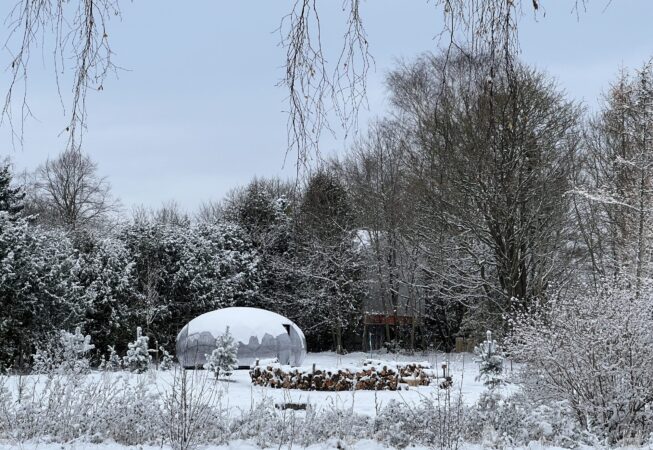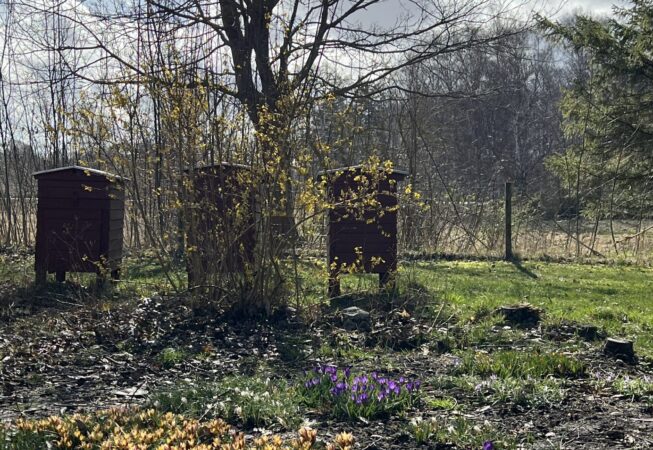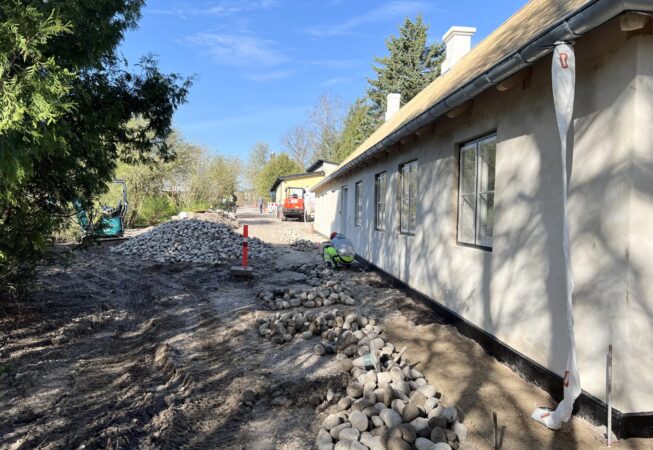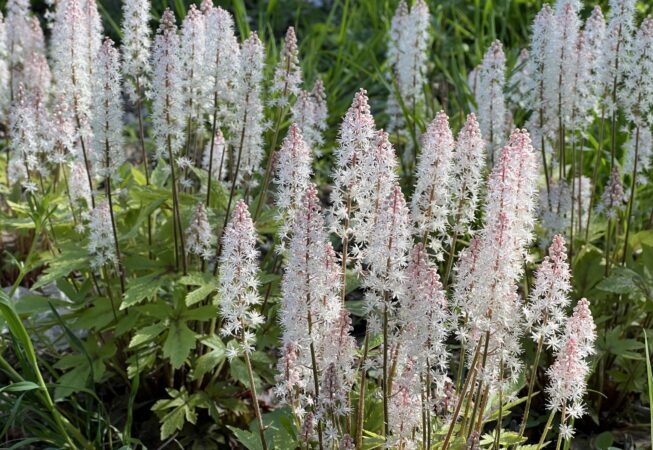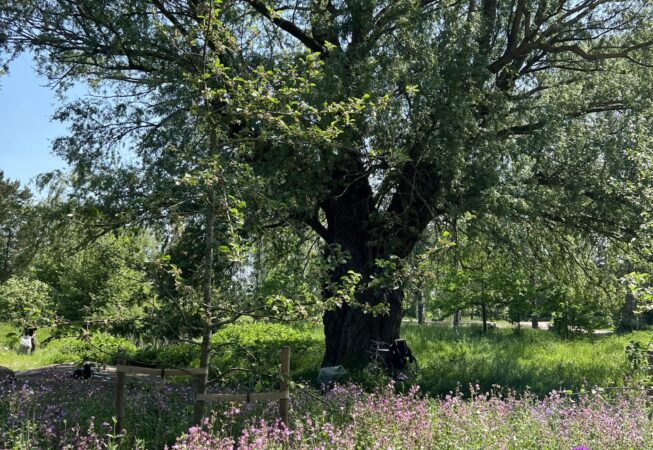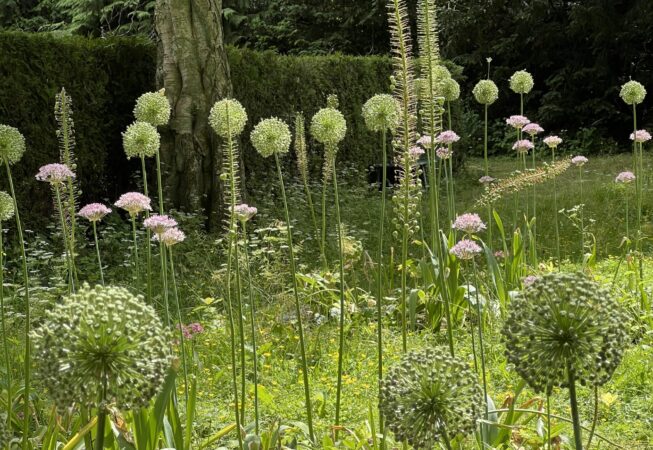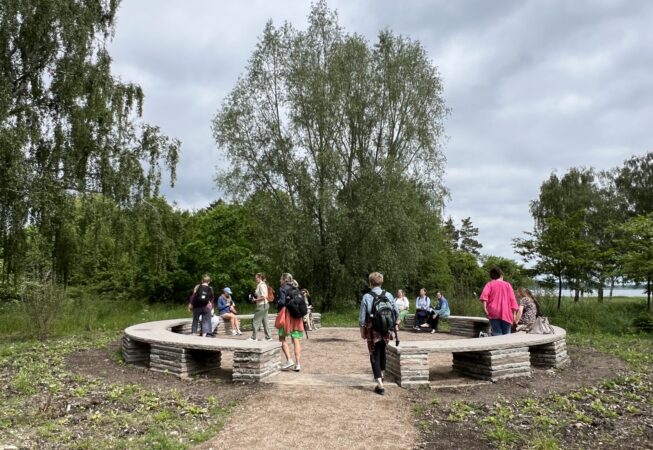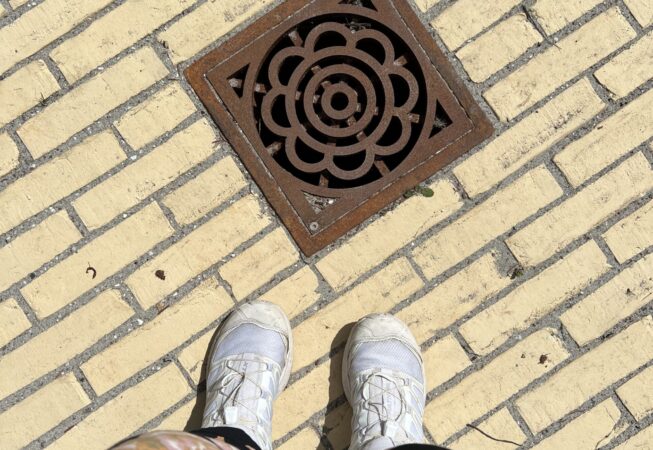Sct. Hans Naturhave (Nature Garden) is an iconic place that calls for peace and quiet, but also creates fertile ground for growth, life, and community spirit.
The fifty-thousand-square-meter park is located at the bottom of Roskilde Fjord, 40 km west of Copenhagen, as an integrated part of ‘Roskilde’s new recreational backyard.’ The park is part of the psychiatric Sankt Hans Hospital, which has existed for more than 200 years. It’s a place where the history of the development of psychiatry in Denmark has unfolded through the centuries, including the history of how patients have been treated and experimented with throughout a sometimes very harsh history.
Now, part of the old hospital is being transformed into housing. The old plant nursery again functions as a work-inclusive community for patients, staff, and volunteers, and the old chapel is being used for both cultural events and commemorations.
From 2020 to 2024, the development of Sct. Hans Naturhave took place. The many different gardens have been upgraded and refined with new natural qualities to help promote mental health through nature, culture, and communities. The design is based on health design and research into people’s preferences for spending time outdoors. There are both active and restorative gardens.
A new layer of comprehensive plantings and quality materials has been added to the gardens.
The Orchard is one of the gardens in Sct. Hans Naturhave. Forty-seven fruit trees have been planted – apples, pears, cherries, and plums – in different varieties. Perennial mats with an exquisite mix of twenty-five different native species have been rolled out in most of the garden. Additionally, one thousand perennials and more than five thousand spring bulbs have been planted.
Some of the other gardens to experience are the Tea Garden, the Garden of Berries, the Restorative Garden, the Forest Garden, the Picnic Garden, the Flower Garden, the Meadow, the Cemetery, and the Chapel Park.
The square in front of the old chapel has been renewed with a 14-meter-wide labyrinth of tiles and sandstones. The basis is a barely 4-meter-wide labyrinth in Bayeux Cathedral in northeastern France.
The rustic labyrinth is for looking at, walking into, and maybe running into if you are a child. The wall, designed by architect Peter Klingest, refines the square. And the square deserved to be beautified.
Around 150 patients died each year during the most difficult years of Sankt Hans Hospital’s history. The dead passed the chapel before being laid to rest in the cemetery, which was the final resting place for patients, doctors, and staff.
Roskilde is a stop on the pilgrimage route between Nidaros Cathedral in Trondheim, Norway, and Santiago de Compostela in Northern Spain. Now pilgrims—and everyone else who passes by here—can stop, rest, and walk into the center of the labyrinth, turn around, and wander back out again— “converted,” you can say, or “redeemed” and feeling lighter in mind.
In the center of the labyrinth is a practical installation – a drainage grate. Helle Nebelong has designed it especially for the square: Octagon Flower – the eight-petalled flower.
According to various sources, the octagon symbolizes eight days: the six days when God created the earth, the seventh day, the day of rest, and the eighth, which symbolizes eternity. The horizontal figure eight symbolizes eternity or infinity, as most people know. “The 8th day” is also referred to as the day when the dead ascends into the kingdom of heaven.
Unique pieces of landscape furniture are integrated into the garden design. Among others, a council ring made of sandstone designed by Helle Nebelong and other furniture made of wood designed by Superpool.org. The Forest Garden is designed by Skovhaver.dk.
The project is a collaboration between Sct. Hans Have, The Municipality of Roskilde, and OJD-fonden. Helle Nebelong was handpicked by the foundation to be the landscape architect on this fantastic, historical site. Two of the old hospital buildings – Fjordhus and Østerhus – were designed by Helle’s great-great-grandfather, architect Niels Sigfred Nebelong (1806-1871).
The project is realized thanks to a generous gift from ANNIE & OTTO JOHS. DETLEF’S FONDE OJD.
Location: Bistrup Allé 36, 4000 Roskilde, Denmark
Building Owner: Roskilde Municipality
Park area: 50.000 m2
Designer: Helle Nebelong, Landscape Architect MAA, MDL, MPM, Director
Contractor: OKNygaard A/S
Inaugurated: May 2024
Design and photos: Helle Nebelong
The drawing is hand-colored by Tim Ebikon.
